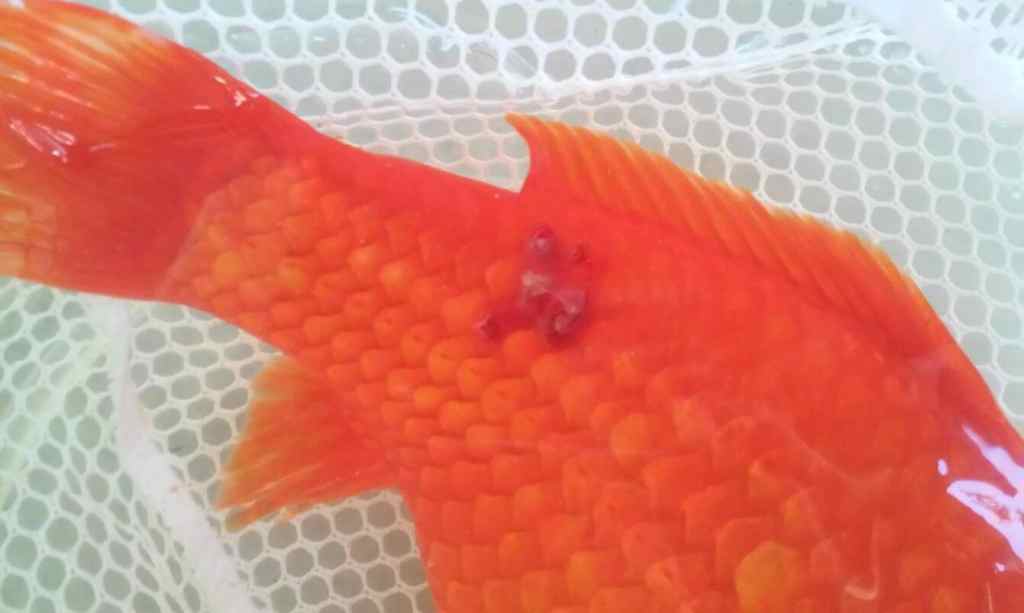There are many diseases that can affect freshwater fish. Fish are at higher risk for disease when their immune function is compromised or when chronic stress is caused by poor water quality, overcrowding, poor diet and other adverse environmental issues. These problems need to be addressed, otherwise any attempted treatment will only produce temporary results.
Identifying disease in fish can be difficult for new fish keepers. Obvious signs, such as spots, lumps, missing scales or worn fins, are the easiest signs of a sick fish. More subtle behavioral signs, such as incorrect buoyancy, tilting, decreased appetite or increased respiratory effort, require more experience to detect. If you are concerned about a fish, call your aquatic veterinarian for more help.
1. Parasites
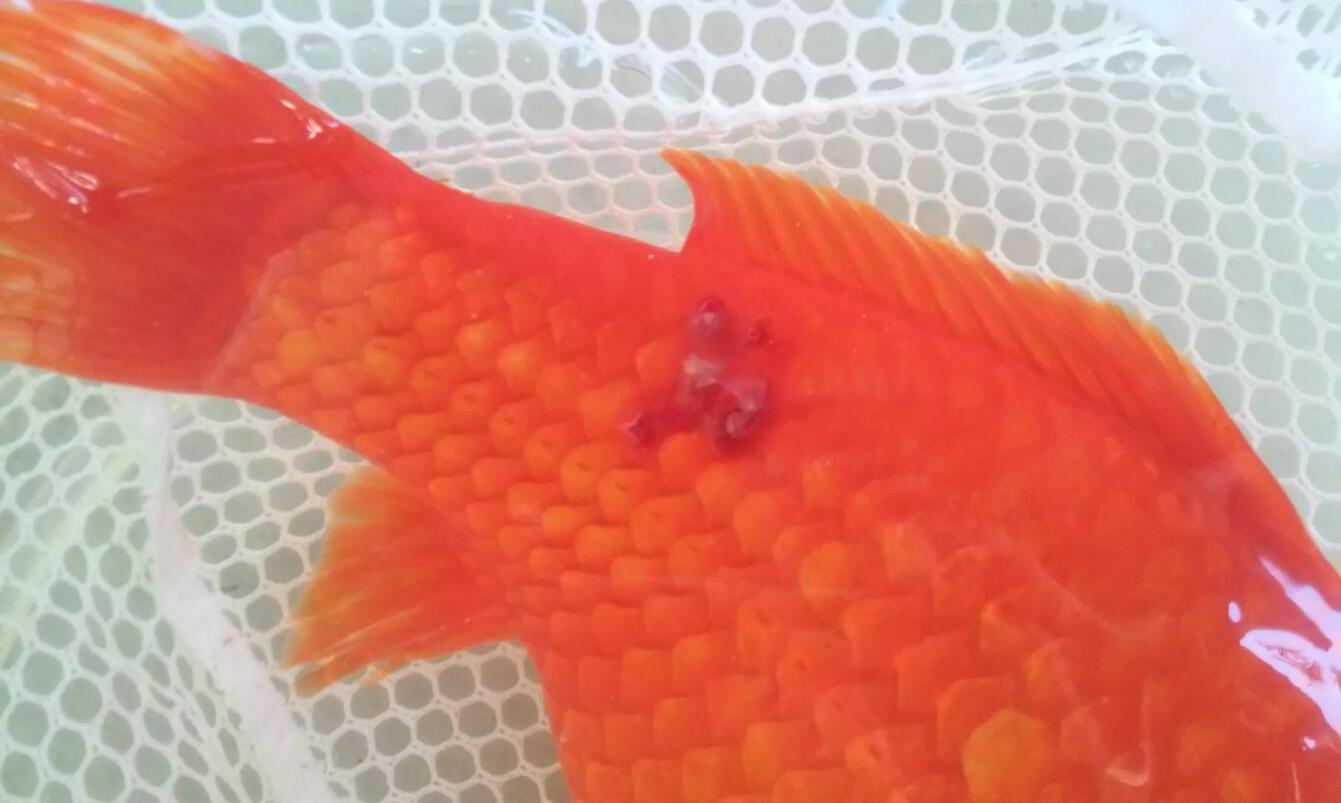 Fish bruised by parasitic infection
Fish bruised by parasitic infection
There are many different parasites that can affect freshwater fish. The most common of these are.
Ichthyophthirius multifiilis (leukoplakia)
Trichomonas
Mongenean trematode (“trematode”)
Icthyobodo (“Kostya”)
Learnea spp.
Genus Argulus (fish lice)
Odontosaurus spp.
Most parasites enter the fish system when new fish are introduced into the aquarium. Usually, the parasites in the fish are always at low levels. Their immune system keeps them from getting out of control. When a fish is stressed by capture, transport and introduction into a foreign system, their immune system is weakened and the parasites can easily replicate. They then jump on all the fish in your tank and cause flashing, lethargy, loss of appetite, and even death from severe infection.
Other clinical signs of parasitic infection include bruising or scale loss and decreased appetite. However, many of these clinical signs may occur in conjunction with other diseases, so diagnosis can be tricky.
Treatment options vary depending on the parasite involved. Most will depend on the temperature. Your aquatic veterinarian will prescribe the correct treatment after microscopic diagnosis.
2. Bacteria
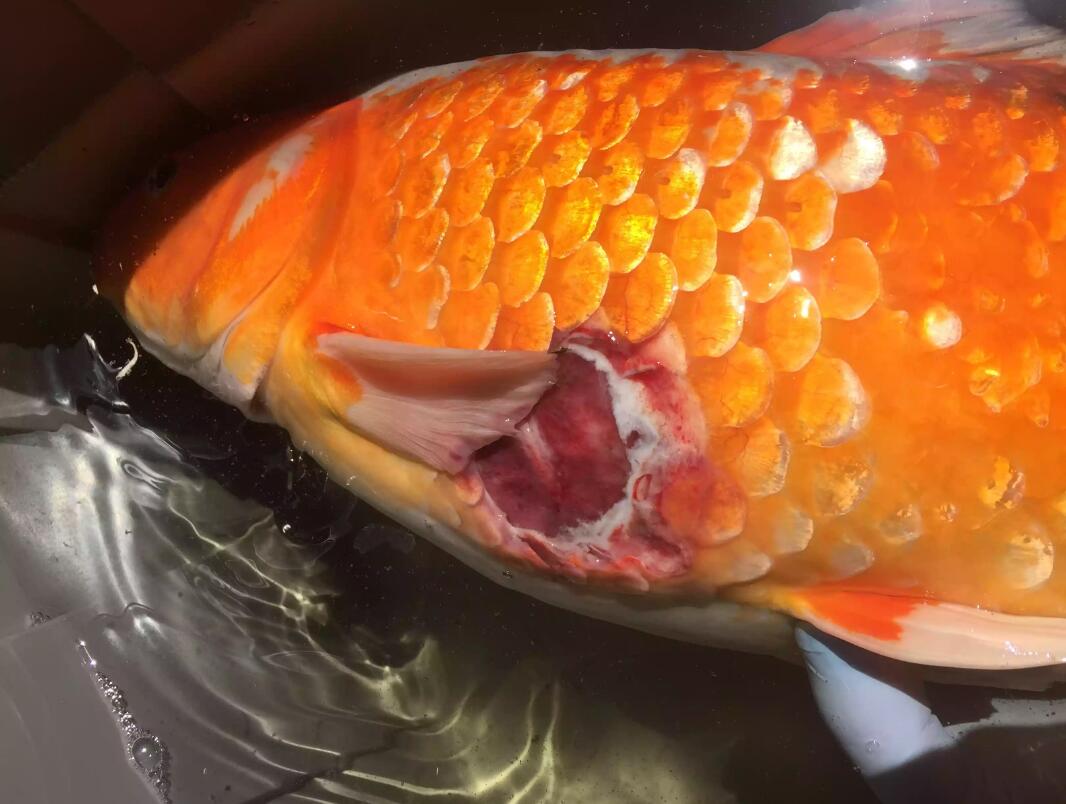 Koi with lateral ulcers due to persistent bacterial infection
Koi with lateral ulcers due to persistent bacterial infection
Most bacterial infections in fish occur secondary to other major stressors. Typical causes of chronic stress include poor water quality, overcrowding, and poor diet.
The most common aquatic bacterial infections are caused by Aeromonas, Vibrio, Edwardsiella, Pseudomonas, and Xanthobacter spp. There are also Mycobacterium spp. infections, often called fish tuberculosis, which can infect immunocompromised humans. Mycobacterium spp. cannot be cured. It requires consultation with an aquatic veterinarian for systematic maintenance.
Clinical signs of bacterial infection include skin edema (edema), ulcers, decreased appetite, fin erosion, lethargy, secondary fungal or parasitic infections, and sudden death.
The genus Flavobacterium, also known as “cotton disease”, is often mistaken for a fungus when it is actually a bacterium.
Overuse of over-the-counter “antibiotic” medications leads to the development of resistant strains of bacteria that require very aggressive treatment. These products also disrupt your biological filtration and lead to New Aquarium Syndrome, which can further harm your fish.
Before you dump a bunch of stuff, consult an aquatic veterinarian who can recommend an appropriate and effective treatment. They may recommend bacterial cultures and sensitivity testing to determine the bacteria causing the problem and the best antibiotic to treat the problem.
3. Fungal disease
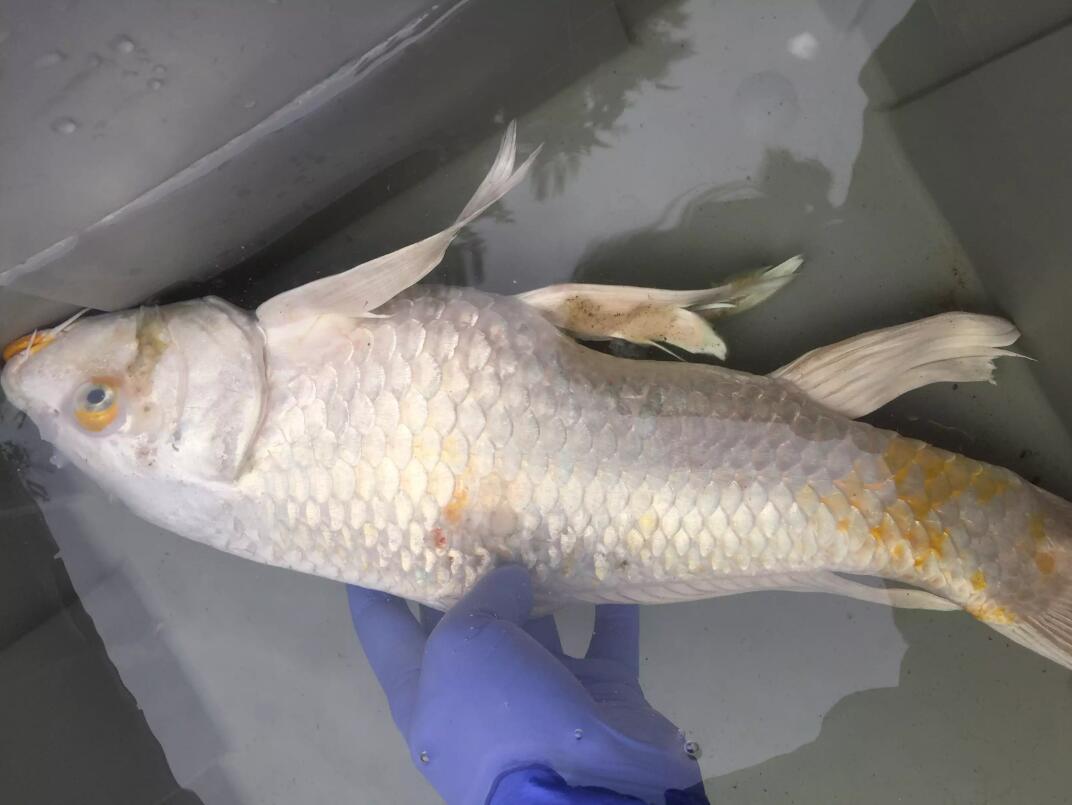 Koi with secondary fungal growth on both sides and fins
Koi with secondary fungal growth on both sides and fins
Fungal diseases are usually found only on the skin of dead fish. These plaques can easily form on dead scales, decaying fins or traumatic injury sites. They are also present in fish with compromised immune systems due to concurrent viral diseases or genetics
Once the dead skin is removed, most fungal infections will subside on their own. Persistent infections may require aggressive treatment coordinated by your veterinarian.
4. Lymphatic cysts
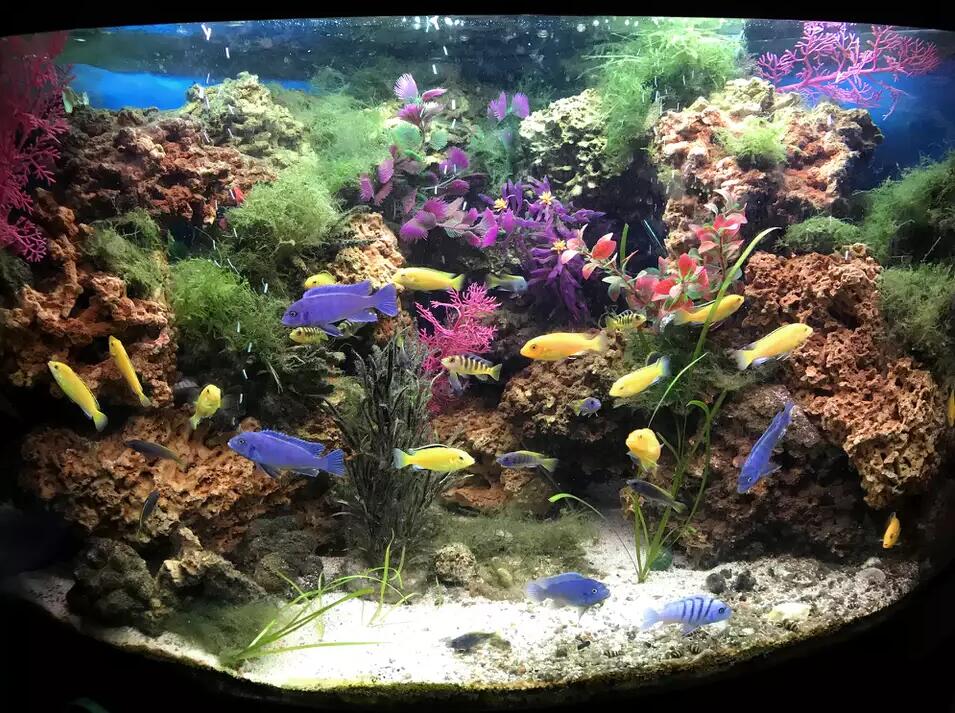 Cichlid fish tank decorated with live plants and fake plants
Cichlid fish tank decorated with live plants and fake plants
There are a number of viral diseases in freshwater fish that affect common aquarium species. The most common is lymphatic cysts.
This is caused by iridovirus and presents as small white bumps that may be confused with fin fractures and white spot disease. Your veterinarian will need to examine your fish to distinguish the various causes of white spots on fish.
5. Air bubble disease
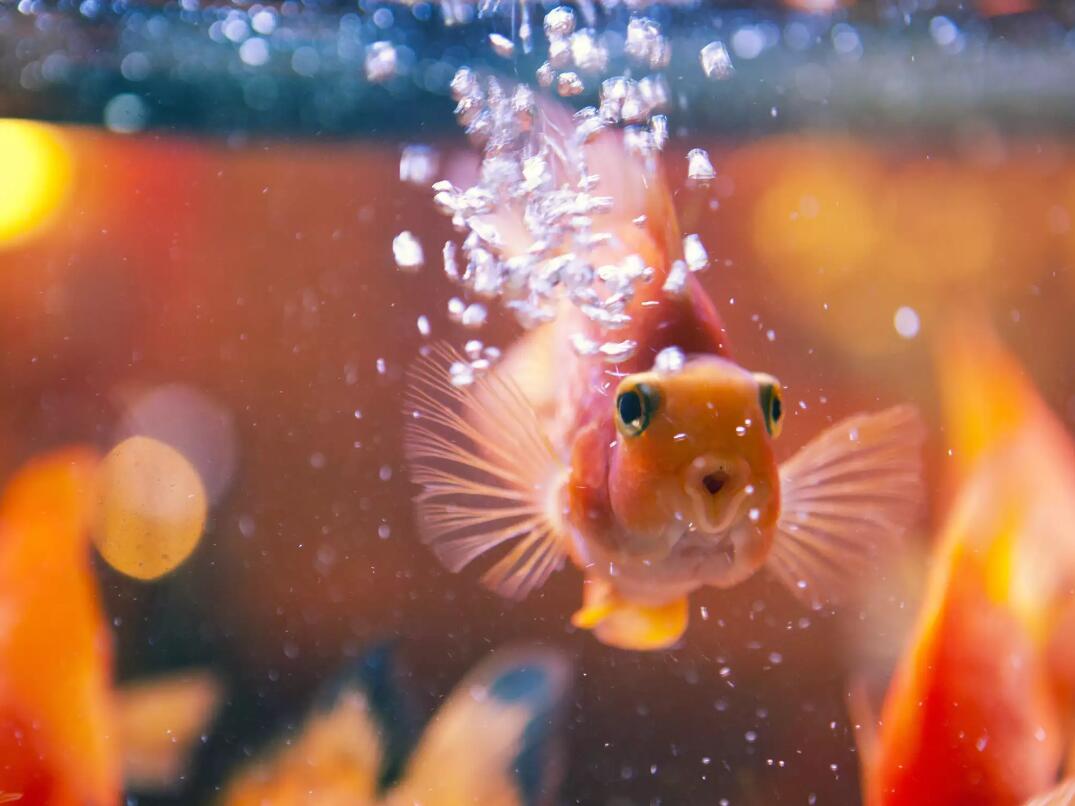 Blood Parrot Cichlid
Blood Parrot Cichlid
Air bubble disease is usually caused by very small micro bubbles in the water tank. This is usually caused by misaligned pipes or rapid temperature changes (e.g. during water changes).
Clinical signs include air bubbles in the skin, fins and eyes. There may be microscopic changes in the gills that your veterinarian can examine under a microscope. You will need veterinary assistance to treat a fish with bubble disease.
6. Cancer
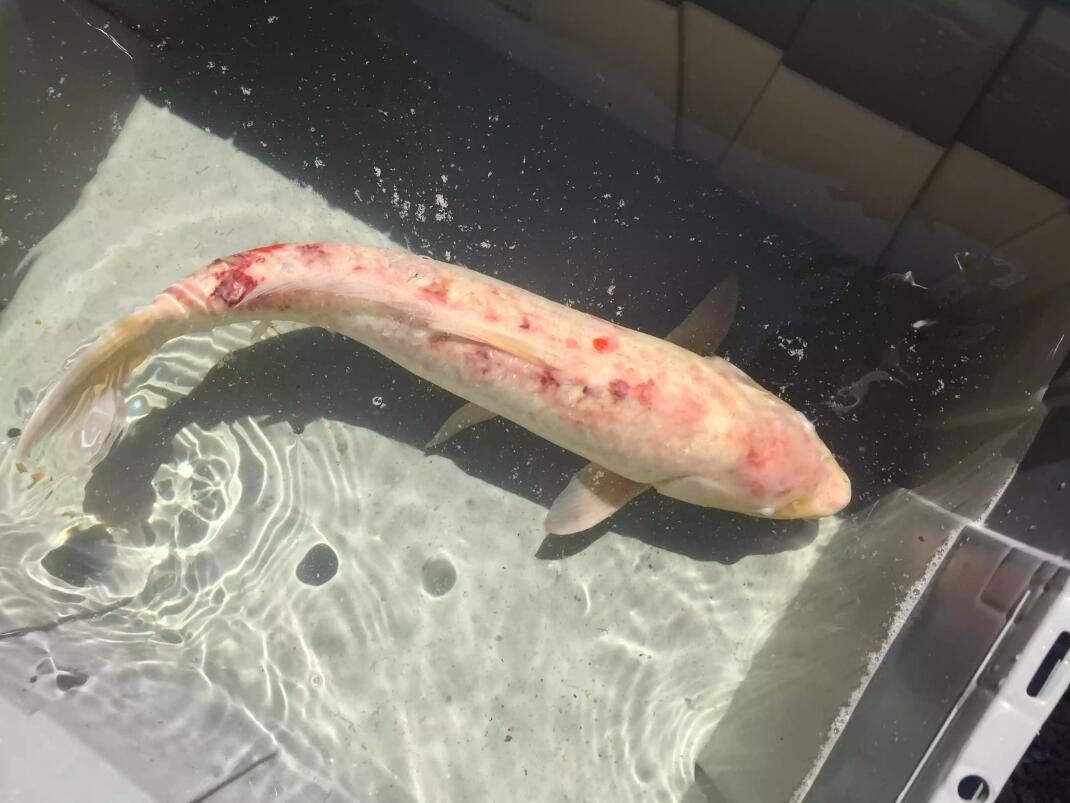 Koi with skin cancer
Koi with skin cancer
Unfortunately, fish are not immune to all types of cancer. There are many types that can infect your freshwater fish and treating them early is vital to their health.
Most cancers manifest as abnormal growths on the outside or inside of the fish. You may also see a loss of appetite, lethargy, or an inability to reproduce.
If you suspect that your fish has cancer, contact your aquatic veterinarian as soon as possible. If caught early, some tumors can be surgically removed, thereby greatly improving the quality and longevity of your fish.
7. Polycystic kidney
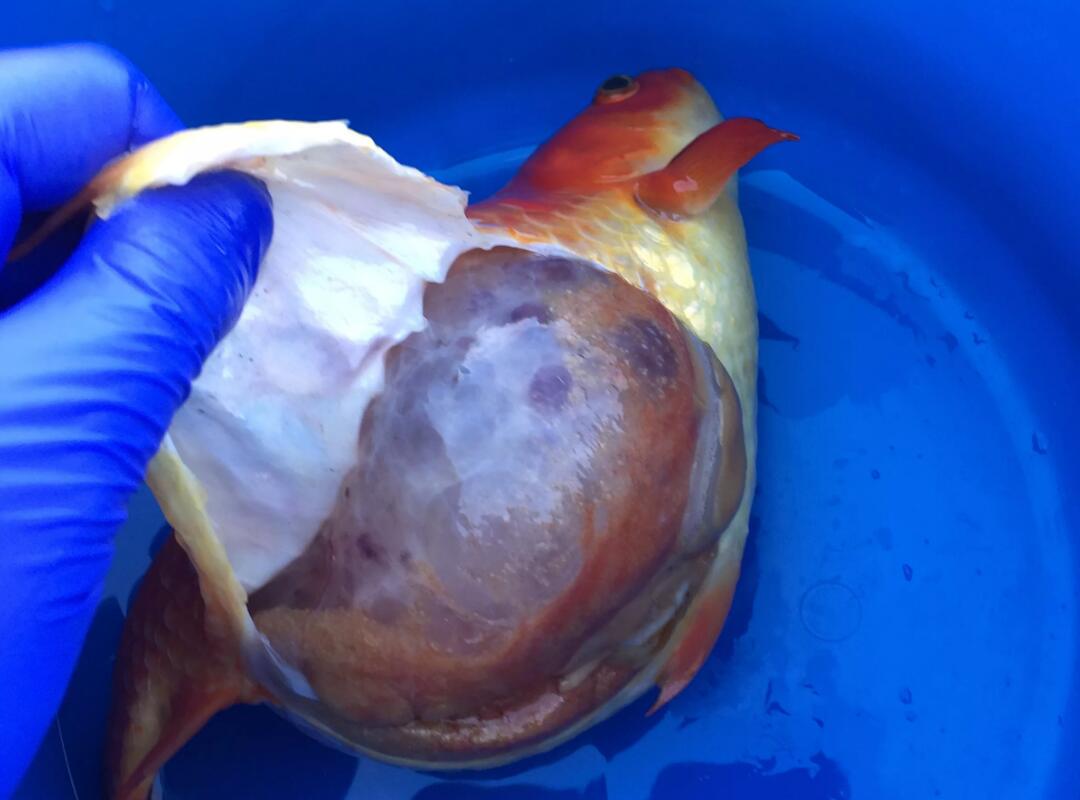 Goldfish that died of polycystic kidney disease
Goldfish that died of polycystic kidney disease
This disease is found in goldfish, one of the most common freshwater ornamental fish. The cause of this disease is not known, in which cysts form in the fish’s kidneys, preventing them from working properly. Your fish’s body begins to absorb the excess water and they start to act like a water balloon. There is no treatment other than palliative care, and unfortunately, this disease is terminal.
As with any animal, early detection and effective treatment is key when treating any disease in freshwater fish. Always make sure your fish are in the proper environment, with good water quality and an adequate diet. Before you attempt any do-it-yourself treatment of your fish, remember that veterinary help may lead to safer, more effective results.

